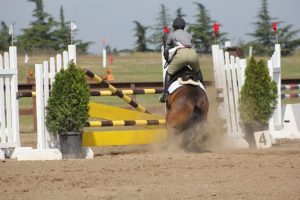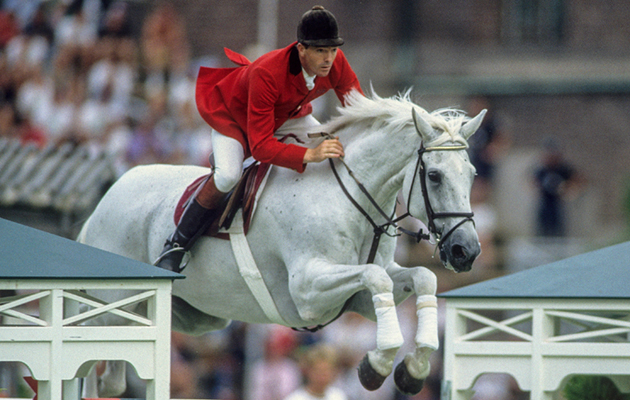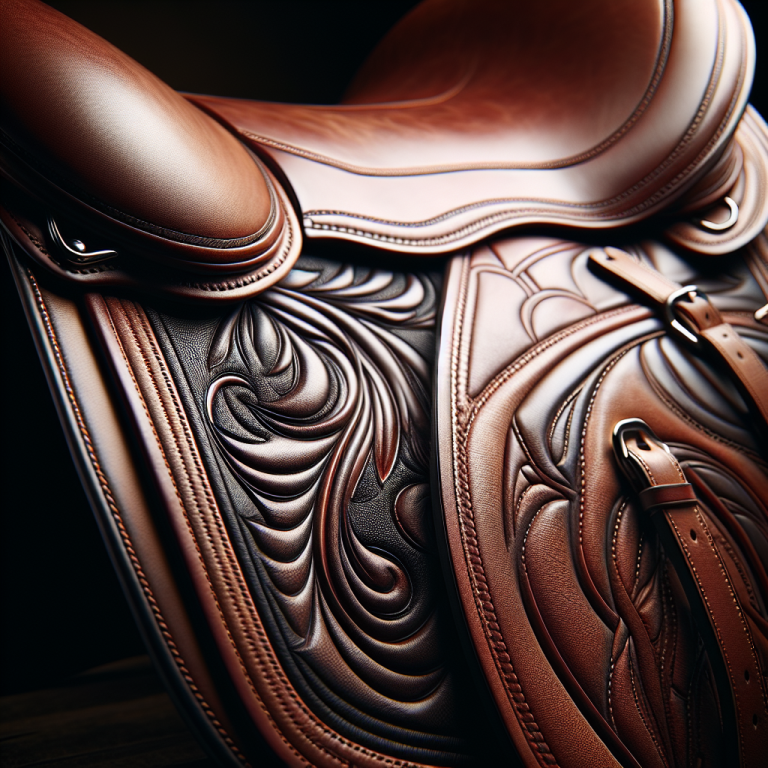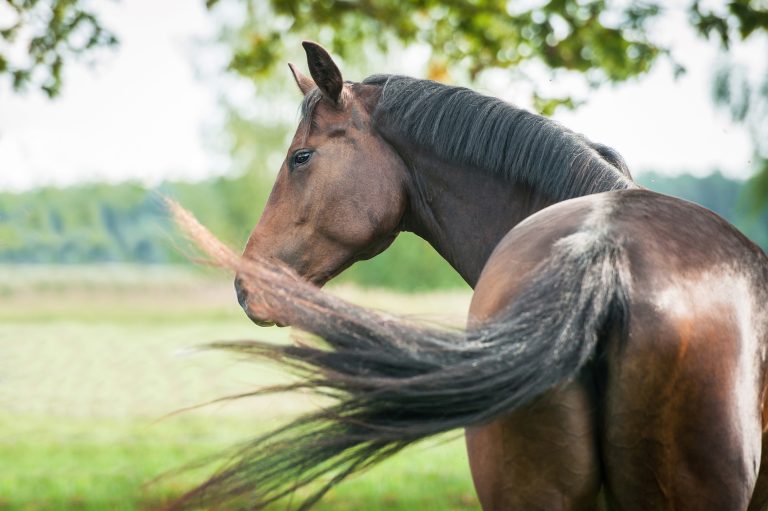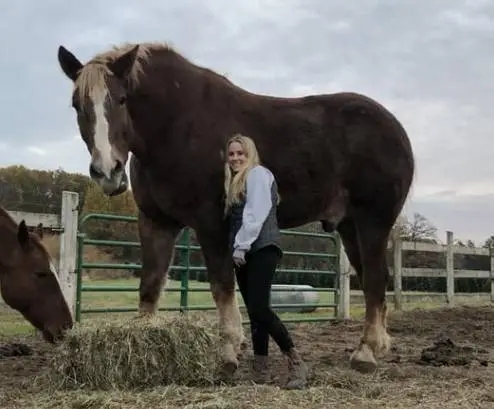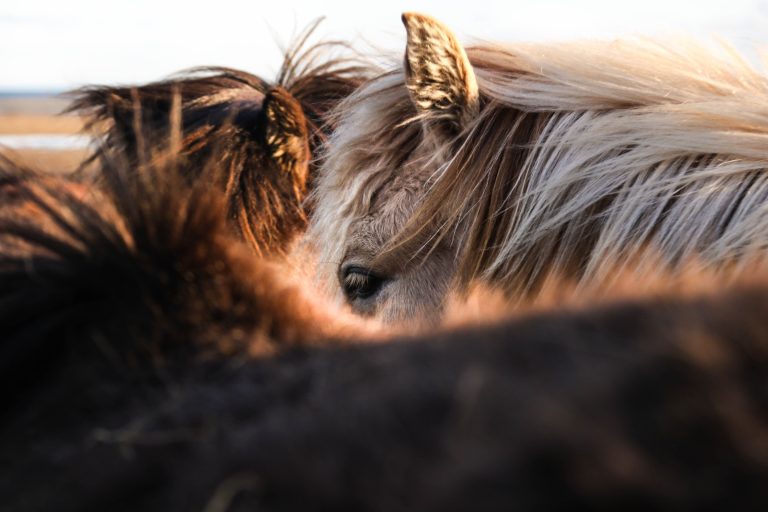Have you ever wondered about the concept of “refusals” in showjumping? In this article, we will explore the intriguing world of this equestrian sport and shed light on what exactly constitutes a refusal. Whether you’re a seasoned equestrian or simply curious about the sport, join us as we unravel the details behind these captivating moments in showjumping competitions. So saddle up and get ready to dive into the world of refusals!
Table of Contents
ToggleOverview of Showjumping
Definition of Showjumping
Showjumping is a popular equestrian sport that involves riders guiding their horses over a series of obstacles, typically in an enclosed arena. The aim is to complete the course without knocking down any fences within a designated time limit. Showjumping requires precision, agility, and a strong partnership between the rider and the horse.
Objective of Showjumping
The objective of showjumping is to test the horse and rider’s ability to navigate a course of varied obstacles, including verticals, spreads, combinations, and related distances. The sport showcases the athleticism and skill of both horse and rider as they work together to overcome these challenges. The ultimate goal in showjumping is to complete the course fault-free within the fastest time, demonstrating accuracy, speed, and control.
Importance of Refusals in Showjumping
Refusals play a significant role in showjumping as they reflect the horse’s willingness and the rider’s communication skills. A refusal occurs when a horse either hesitates or refuses to jump an obstacle, resulting in the rider having to go around or reattempt the jump. Understanding refusals is essential for riders and trainers, as they can impact a team’s performance, confidence, and safety.
What are Refusals?
Definition of Refusals
In showjumping, a refusal is when a horse stops before or at an obstacle, refusing to jump. It may be caused by a lack of confidence, an incorrect approach, fear, or physical discomfort. Refusals can be frustrating for riders, as they prevent smooth progression through a course and can result in penalties. It is crucial to distinguish between a genuine refusal and a run-out, where the horse evades jumping the obstacle by veering off to the side.
Types of Refusals
There are two primary types of refusals in showjumping: run-outs and stops. A run-out refers to a situation where the horse avoids jumping the obstacle by going around it, instead of directly approaching it. A stop occurs when the horse hesitates or comes to a complete halt before or during the attempt to jump the obstacle. Both types of refusals are penalised in competitions, emphasising the importance of properly training and preparing horses to confidently tackle jumps.
Common Causes of Refusals
Refusals can be triggered by various factors, including both rider- and horse-related issues. Common causes of refusals include inexperienced riders, poor communication between horse and rider, lack of trust, inappropriate riding technique, unfamiliar or intimidating obstacles, pain or discomfort in the horse, and fear of injury. Identifying and addressing these issues is crucial to preventing refusals and improving overall performance.
Effect on Performance
Impact of Refusals on Rider and Horse
Refusals can have a significant impact on the performance of both the rider and the horse. For the rider, refusals can lead to a loss of confidence, frustration, and a sense of failure. It requires skill and mental resilience to handle refusals without letting them negatively affect subsequent jumps. For the horse, refusals can erode their trust in the rider, create anxiety, and potentially cause injury if they attempt to jump from an awkward position. Building a strong partnership and addressing any underlying issues is essential in minimising the negative effects of refusals.
Importance of Minimising Refusals
Minimising refusals is crucial for show-jumping success. Refusals can result in penalties, which can negatively impact a team’s overall score and chances of winning. Additionally, frequent refusals can harm the horse’s confidence, making it progressively more challenging to overcome future obstacles. Minimising refusals enhances the overall flow, dynamics, and safety of the competition, allowing riders and horses to perform at their best.
Ways to Avoid Refusals
Avoiding refusals requires consistent training, proper preparation, and effective communication between rider and horse. Some strategies to minimise refusals include practicing a variety of obstacles, gradually increasing difficulty levels, using positive reinforcement, developing trust between horse and rider, implementing consistent riding techniques, addressing any physical discomfort, and improving rider skills through lessons and clinics. Creating a supportive and encouraging training environment is vital for reducing refusals and building a successful partnership.
Penalties and Rules
Penalties for Refusals
Refusals result in penalties, which are added to a rider’s score. In most competitions, a refusal incurs four penalty points. If a rider incurs three refusals on the same obstacle, they are eliminated from the competition. Additionally, exceeding the time limit can result in time penalties, further affecting a rider’s overall score.
Fédération Equestre Internationale (FEI) Rules on Refusals
The Fédération Equestre Internationale (FEI) is the governing body for international equestrian sport, including showjumping. The FEI has established rules regarding refusals to ensure fairness and safety. These rules outline the penalties, course design standards, and criteria for elimination. Adhering to these rules is crucial for maintaining a fair and competitive showjumping environment.
Consequences of Multiple Refusals
Multiple refusals can have severe consequences for riders and horses. In addition to accumulating penalty points, riders may face disqualification or be unable to proceed to the next round. Repeated refusals may also result in disciplinary action, including warnings or suspensions, depending on the severity of the situation. It is essential for riders to address any recurring refusals promptly and seek professional guidance to overcome these challenges.
Training and Preparation
Importance of Training for Refusals
Training plays a fundamental role in preparing horses and riders to confidently tackle showjumping courses. Training for refusals involves building trust, enhancing communication, and developing the necessary skills to overcome obstacles. By incorporating exercises and techniques specifically designed to address refusals, riders can improve their understanding of horse behaviour, strengthen their partnership, and enhance their overall performance.
Exercises to Prevent Refusals
There are various exercises that riders can incorporate into their training sessions to prevent refusals. These exercises focus on developing balance, agility, and accurate jumping technique. Incorporating gridwork, gymnastics, and related distance exercises can improve a horse’s jumping form, enhance their confidence, and refine the rider’s aids. Regularly practicing these exercises can instill a sense of familiarity and improve the horse’s willingness to jump, minimising the occurrence of refusals.
Developing Trust and Confidence
Building trust and confidence between the rider and the horse is paramount in reducing refusals. Riders should prioritise positive reinforcement, patience, and consistency throughout the training process. Establishing clear communication, rewarding positive behaviours, and gradually increasing the difficulty level of obstacles can help build trust and confidence in both horse and rider. It is crucial to create a supportive and encouraging training environment to establish a strong partnership based on trust and mutual understanding.
The Rider’s Responsibility
Identifying Signs of Refusal
As a rider, it is essential to be able to identify the signs that may indicate a potential refusal. These signs can include resistance, slowing down, veering to the side, or any sudden change in the horse’s behaviour or body language. By recognising these signs early on, riders can adjust their approach, provide clear guidance, and potentially prevent a refusal from occurring.
Reacting to a Refusal
When faced with a refusal, it is crucial for riders to remain calm, composed, and in control. Panicking or reacting with frustration can exacerbate the situation and negatively impact the horse’s willingness to jump. Riders should take a moment to evaluate the situation, reposition the horse, and patiently encourage them to approach the obstacle again. Utilising clear aids, maintaining a positive mindset, and demonstrating patience and consistency can help overcome refusals.
Maintaining Control and Composure
Maintaining control and composure is essential for riders during a refusal. Riders should avoid becoming tense or aggressive, as this can intimidate the horse further and worsen the situation. Instead, maintaining a relaxed yet assertive posture, using clear aids, and remaining focused can help in regaining the horse’s trust and guiding them through the obstacle. Staying calm and collected allows riders to effectively communicate with their horses and minimise the chances of further refusals.
The Horse’s Role
Factors Influencing a Horse’s Refusal
Several factors can influence a horse’s likelihood of refusing an obstacle. These factors can include the horse’s breed, temperament, past experiences, physical condition, and the rider’s ability to effectively communicate the intended path. Understanding the horse’s individual characteristics and addressing any underlying issues is crucial when preparing them to navigate showjumping courses successfully.
Recognising a Refusal-Prone Horse
Some horses may have a predisposition to refusals due to their temperament, lack of confidence, or past negative experiences. Recognising a refusal-prone horse involves observing their behaviour, response to training exercises, and consistency in performance. By identifying these tendencies early on, riders and trainers can implement targeted training techniques to address the horse’s specific needs and reduce the likelihood of refusals.
Training Techniques for Overcoming Refusal Tendencies
Training techniques for overcoming refusal tendencies focus on building the horse’s confidence, trust, and willingness to jump. Gradual exposure to a variety of obstacles, incorporating positive reinforcement, systematic desensitisation, and rewarding small successes can help increase the horse’s trust in the rider’s guidance and improve their jumping technique. Establishing a consistent, patient, and supportive training routine is key to developing a refusal-free partnership.
Safety Precautions
Importance of Safety in Showjumping
Safety is of paramount importance in showjumping. Since refusals can potentially lead to falls or accidents, riders and organisers must prioritise the well-being of both horse and rider. Establishing safety protocols, maintaining proper riding equipment, ensuring a suitable training environment, and promoting responsible horsemanship are crucial to minimising the risk of injuries and creating a safe showjumping experience.
Protective Gear for Riders and Horses
Using appropriate protective gear is vital in minimising the risk of injuries in the event of a refusal. Riders should wear certified helmets, protective vests, and appropriate footwear to safeguard against head injuries and fractures. Horses should have properly fitted boots or bandages to protect their legs from any accidental strikes during a refusal. Regular inspection and maintenance of equipment is essential to ensuring its effectiveness and integrity.
Emergency Procedures for Refusals
In the event of a severe refusal or an accident, having established emergency procedures is essential. The organisers should have trained personnel, including first aid providers, on-site to quickly respond to any potential injuries. Clear communication channels should be established to ensure prompt access to medical assistance if needed. Furthermore, having an evacuation plan for injured riders or horses should be a priority to ensure their well-being and minimise the severity of potential injuries.
The Role of the Course Designer
Designing Courses to Minimise Refusals
Course designers play a critical role in creating showjumping courses that test the horse and rider’s abilities while minimising the occurrence of refusals. They must consider factors such as the level of difficulty, combinations, technical challenges, and related distances. By strategically placing obstacles and designing a well-balanced course, course designers can encourage a flowing and confident ride while maintaining appropriate levels of difficulty.
Creating Challenging but Fair Obstacles
Course designers must strike a balance between creating challenging obstacles and maintaining fairness in the competition. While the goal is to test the horse and rider’s skills, overly complex or intimidating obstacles can lead to an increased risk of refusals, potentially compromising the safety of the participants. Designing obstacles that require accuracy, precision, and technical expertise while taking into account the skill levels of the riders ensures a fair and enjoyable competition experience.
Considering Skill Levels and Experience
Another aspect of a course designer’s responsibility is to consider the skill levels and experience of the riders who will be competing. Showjumping offers various levels, from beginner to advanced, and it is essential to design courses that align with each level’s requirements. By incorporating suitable heights, distances, and challenges for each level, course designers can facilitate a progressive learning experience and reduce the likelihood of refusals.
Conclusion
Understanding the Concept of Refusals
Refusals are an integral part of showjumping that can impact a team’s performance, confidence, and safety. Identifying the types, causes, and effects of refusals is crucial for riders, trainers, and organisers alike. By understanding the concept of refusals, individuals can take proactive steps to address and minimise their occurrence, ultimately enhancing the overall experience of showjumping.
Working Towards Reducing Refusals
Reducing refusals requires consistent training, proper preparation, effective communication, and a positive mindset. Through exercises designed to address refusals, building trust and confidence, and implementing safety precautions, riders can work towards eliminating refusals and improving their performance. By continuously striving to enhance their skills and the partnership with their horse, riders can navigate showjumping courses with precision, agility, and success.
Maintaining a Positive Attitude in Showjumping
Showjumping is a challenging and exhilarating sport that requires dedication, perseverance, and a positive attitude. Refusals are a natural part of the learning process, and maintaining a positive mindset is essential to overcoming obstacles and setbacks. By embracing the learning opportunities presented by refusals, riders can grow both as equestrians and individuals, forging a stronger bond with their horses and achieving success in the thrilling world of showjumping.



